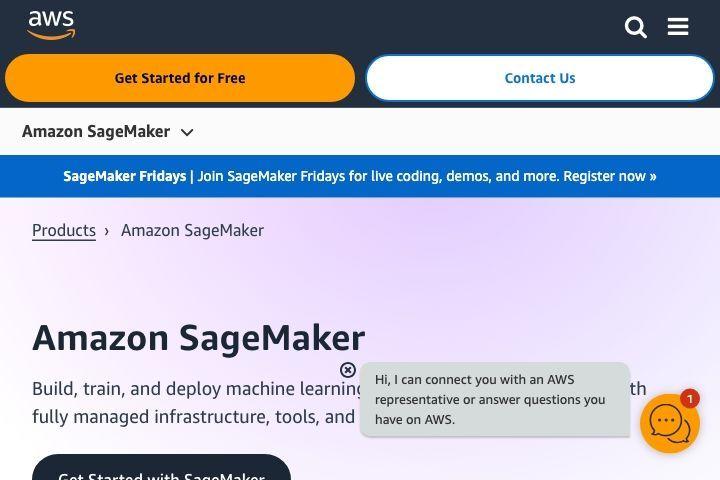MLflow is an open-source platform that assists in the management of ML's entire lifecycle, including experimentation, reproducibility, and deployment. It allows integration with multiple ML libraries and can be utilized with different tools like Apache Spark, TensorFlow, and Kubernetes. The important characteristics of MLflow include experiment tracking, model packaging, and model registry, and thus it is a suitable solution for most organizations.
2. Kubeflow
Kubeflow is an open-source, vendor-agnostic platform natively built on top of Kubernetes that makes ML model deployment, scaling, and management simple and without effort. It leverages the power of Kubernetes for a perfect experience in ML workflows. Besides the training and serving components, there are other additional tools included in Kubeflow that make it an end-to-end comprehensive solution in ML operations.
3. Amazon SageMaker
Amazon SageMaker is an entirely managed service that enables a developer and data scientist to quickly build, train, and deploy ML models. It offers all types of tools for data labeling, model tuning as well as deployment. SageMaker features additional capabilities for monitoring the performance of models and drift, ensuring that models stay accurate as time goes by.
4. Azure Machine Learning
Azure Machine Learning is a cloud-based service for creating and training, as well as deploying ML models. It supports multiple frameworks, including TensorFlow, PyTorch, and scikit-learn. Azure ML provides tools for automated ML, experiment tracking, and model management and therefore represents one of the most powerful platforms for scaling ML operations up.
5. Google AI Platform
Google AI Platform is a suite of tools used in building, deploying, as well as managing ML models. Tying into the other Google Cloud services, it is all-inclusive for being bundled up together.
It extends to areas such as data processing to prepare for training, training of the model as well as its deployment. The AI Platform also introduces techniques related to hyperparameter tuning, model versioning, and monitoring so that models will perform optimally in production.
6. DataRobot
DataRobot is an enterprise AI platform that will automate all development and deployment procedures in building, deploying, and maintaining ML models. They give tools for data preparation, feature engineering, and model training.
DataRobot's automated machine learning capabilities allow users to rapidly develop high-quality models. Its deployment and monitoring tools guarantee models stay effective over time.
7. Neptune.ai
Neptune.ai is a MLOps metadata store that keeps track of ML experiments, models, and data. What is interesting in this case is that it is a centralized repository where everything related to ML will be readily found to easily handle and reproduce experiments.
Neptune.ai has integrations with some of the most used ML frameworks and tools, making the product very flexible in tracking and managing ML workflows.
8. Domino Data Lab
This is a platform that enables data science teams to work collaboratively by developing models and deploying them. They offer experiment tracking, model versioning, and automated deployment tools.
This collaborative working environment within Domino helps teams more effectively work on the development and deployment of models.
9. Valohai
It is a service MLOps that centers on full-cycle automation, from extracting the data up to deploying models. Valohai contains tools for versioning control, pipeline orchestration, and also model monitoring.
This would enable the streamlined ML workflows involving less time and effort needed in developing and using the models.
10. H2O.ai
H2O.ai has a series of products that can be used to build, deploy, and manage ML models. H2O-3 is an open-source ML library, while Driverless AI is an automatic machine learning tool.
Due to its support for such a diverse list of tasks ranging from preprocessing to model deployment, H2O.ai is an end-to-end platform that can scale ML operations.

